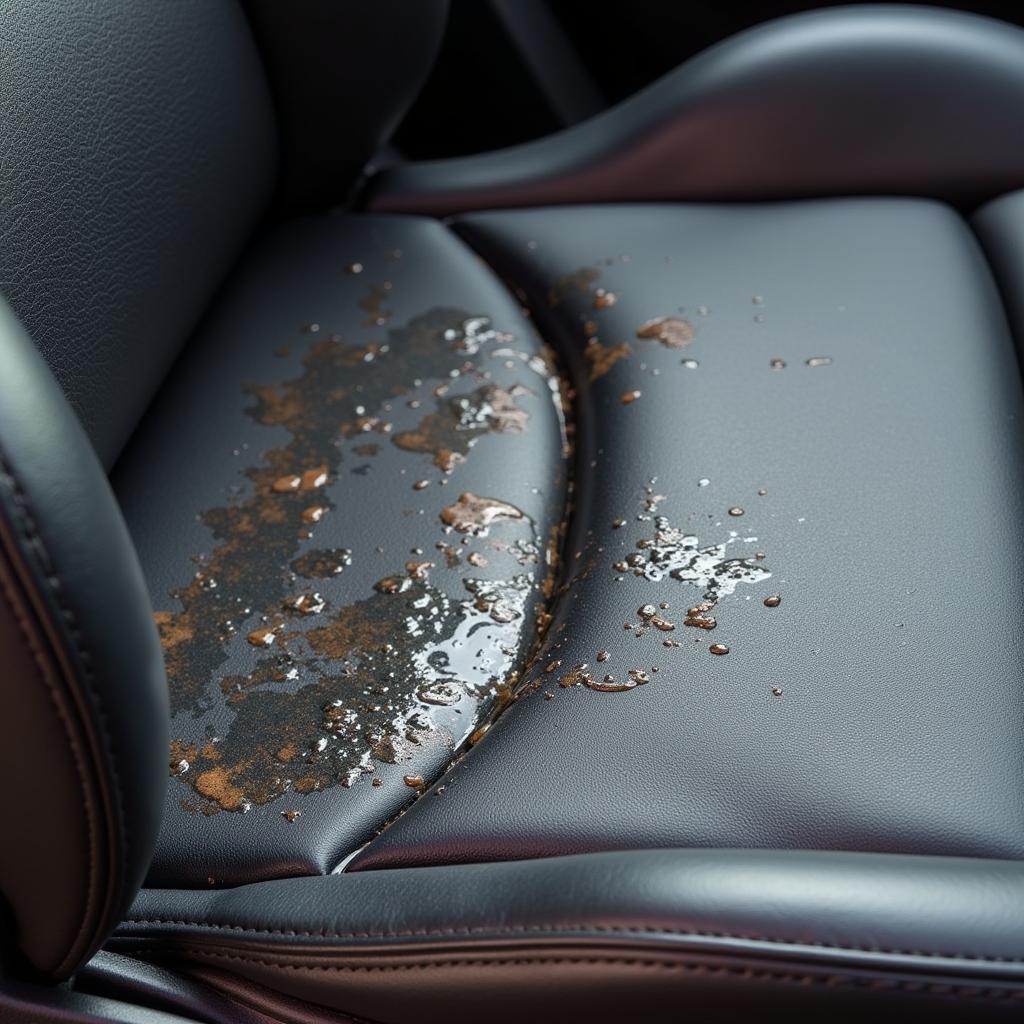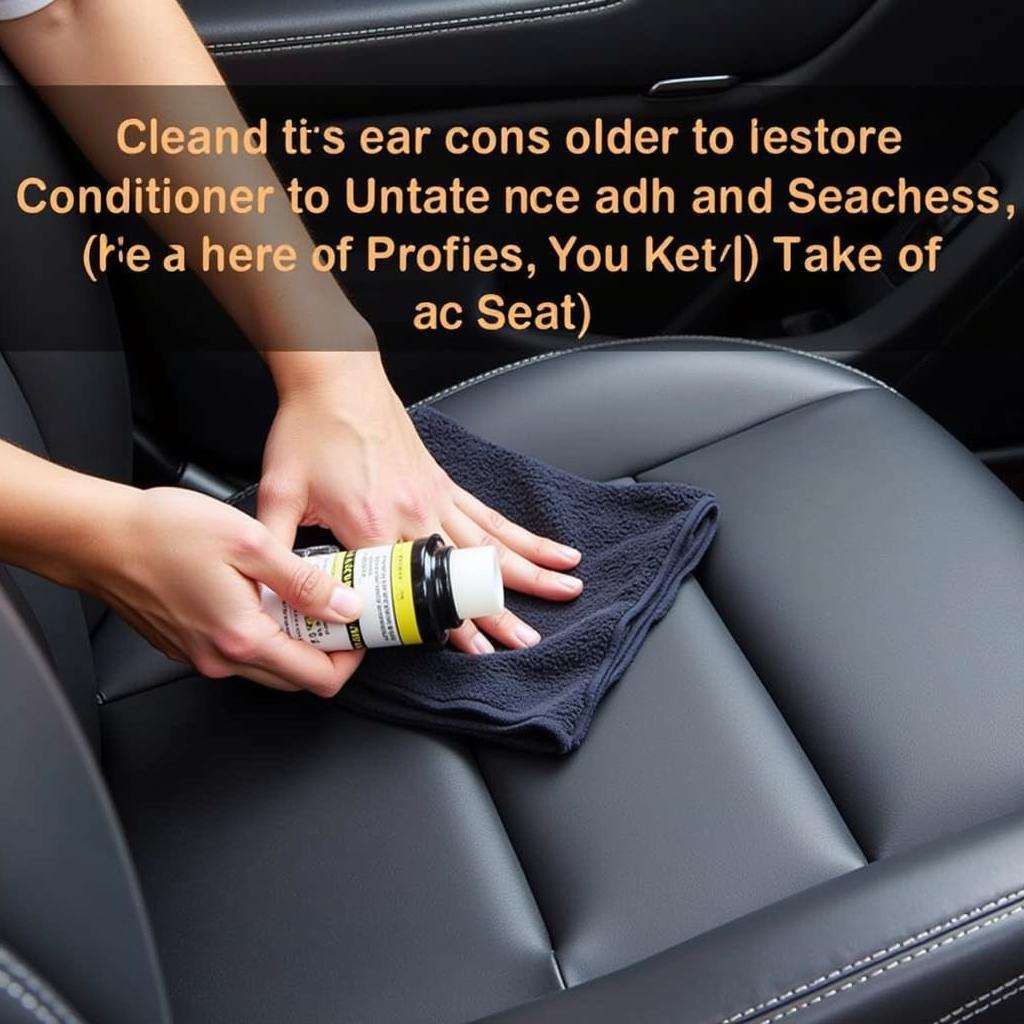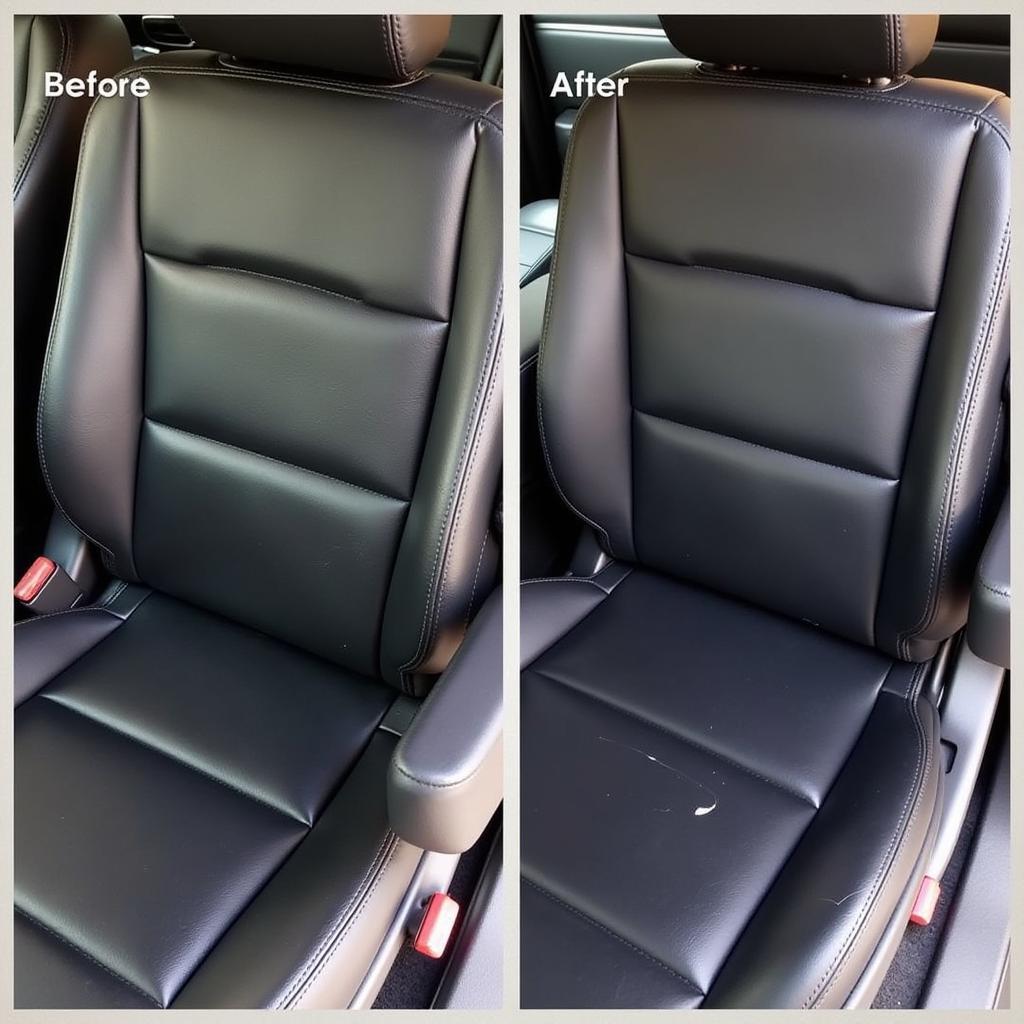
Water Damaged Leather Car Seat
Water damage on leather car seats can be a real eyesore, leaving unsightly watermarks and even leading to unpleasant odors. However, with the right approach and a little elbow grease, you can often restore your leather seats to their former glory. This comprehensive guide will walk you through the steps on How To Repair Car Leather Seats From Water Damage, helping you save money and maintain the luxurious feel of your vehicle’s interior.
 Water Damaged Leather Car Seat
Water Damaged Leather Car Seat
Understanding Water Damage on Leather Car Seats
Before diving into the repair process, it’s important to understand how water affects leather. Leather is a porous material, meaning it has tiny holes that can absorb liquids like water. When water seeps into these pores, it can disrupt the leather’s natural oils and dyes, leading to:
- Watermarks: These are light or dark stains left behind after water dries on the leather’s surface.
- Discoloration: Water can cause the leather dye to bleed or fade, resulting in uneven color.
- Stiffness: As leather dries after getting wet, it can become stiff and less supple.
- Mold and Mildew: In humid environments, water trapped within the leather can create a breeding ground for mold and mildew, leading to unpleasant odors and potential health hazards.
How to Repair Water Damaged Leather Car Seats: A Step-by-Step Guide
The sooner you address water damage on your leather car seats, the better the outcome. Here’s a comprehensive guide to help you through the process:
1. Assess the Damage
Begin by assessing the extent of the water damage. Is it a recent spill, or has the water been sitting for a while? Is the damage superficial, or has it penetrated deep into the leather?
2. Gather Your Supplies
You’ll need the following materials to tackle the water damage:
- Clean microfiber cloths
- Soft-bristled brush
- Leather cleaner (specifically designed for car seats)
- Leather conditioner
- Distilled water
- Spray bottle
- White vinegar (optional)
3. Dry the Affected Area
If the water damage is recent, start by absorbing as much water as possible using a clean, dry microfiber cloth. Gently blot the affected area, avoiding rubbing, which can spread the water and worsen the damage.
4. Clean the Leather
Using a leather cleaner specifically formulated for car seats, clean the affected area to remove any dirt, grime, or residue. Spray the cleaner onto a microfiber cloth and gently wipe the leather in circular motions. Avoid harsh chemicals or household cleaners, as these can damage the leather.
5. Address Watermarks and Discoloration
-
For light watermarks: Mix equal parts distilled water and white vinegar in a spray bottle. Lightly mist the affected area and gently wipe with a clean microfiber cloth. The vinegar helps to lift the watermarks and restore the leather’s natural pH balance.
-
For stubborn watermarks and discoloration: Consider using a dedicated leather stain remover. Follow the product instructions carefully. If the discoloration persists, you might need to consult a professional leather repair specialist.
6. Condition the Leather
After cleaning and addressing the watermarks, it’s crucial to condition the leather to replenish its lost moisture and keep it supple. Apply a high-quality leather conditioner evenly to the affected area, working it into the leather with circular motions. Allow the conditioner to absorb for the recommended time before wiping off any excess.
 Applying Leather Conditioner on Car Seat
Applying Leather Conditioner on Car Seat
7. Prevent Future Water Damage
Prevention is always better than cure. Protect your leather car seats from future water damage by:
- Using seat covers, especially during rainy seasons or if you frequently carry passengers.
- Addressing spills immediately to prevent water from soaking into the leather.
- Parking your car in a shaded area or using a sunshade to minimize the drying and fading effects of the sun’s UV rays.
Expert Insights
“Many car owners underestimate the importance of regular leather conditioning,” says John Smith, a seasoned automotive upholstery specialist. “Consistent care not only maintains the luxurious look and feel of leather but also helps to prevent water damage from penetrating deep into the material.”
Conclusion
Repairing water damage on car leather seats is often achievable with prompt action and the right approach. By following these steps, you can restore your leather seats to their former glory and maintain the pristine condition of your vehicle’s interior. Remember, regular cleaning and conditioning are key to preventing future water damage and prolonging the lifespan of your leather car seats.
FAQs
Q1: Can I use a hairdryer to dry water-damaged leather car seats?
A1: It’s best to avoid using a hairdryer as the high heat can further dry out the leather and potentially worsen the damage. Air drying in a shaded area with good ventilation is recommended.
Q2: How often should I condition my leather car seats?
A2: It’s generally recommended to condition your leather car seats every 3-6 months, or more frequently if they are regularly exposed to harsh weather conditions.
Related Car Seat Repair Guides
- How to repair water-damaged leather car seats
- How to repair discolored leather car seats
- How to repair cigarette burns in car seats
- Repair car seat
- How to repair upholstery car seats
For any further assistance with car repairs or expert advice, feel free to contact us via WhatsApp: +1(641)206-8880 or Email: [email protected]. Our dedicated team is available 24/7 to answer your queries.




